Agile Change Management: Overview, Principles, Best Practices (2024)

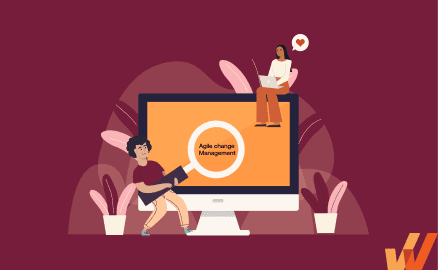
Between overall technology advancements causing enterprise digital transformation, as well as unforeseen worldwide disruptions such as COVID-19 and resulting side effects in the supply chain, inflation, and the Great Resignation, organizations have had to become resilient in the last 3 years.
In the middle of corporate change happening at an exponential rate, businesses have had to adapt on the fly. This highlighted the need not only for businesses to create effective change management but to adopt strategies from an agile perspective.
What is Agile Change Management?
Change is the one constant across business sectors, with agile change management techniques helping you come out ahead. Political, social, economic, regulatory and technological changes constantly hit businesses, making them at risk if they fail to adapt to change.
In February 2001, a group of 17 software developers met in Snowbird, Utah to discuss how to succeed in the new digital age. Their traditional practices, perfect for manufacturing and construction, weren’t working for software development. This “Agile Alliance” produced 12 principles that prioritized iterative and incremental development, collaboration and self-organizing, cross-functional teams and quality over rules.
Agile processes are piloted in short iterative spurts of 1-3 weeks and collaboratively reviewed, helping developers save money and time and succeed through change, among other benefits. Agile methods include Scrum, Kanban, Extreme Programming, and Feature-Driven Development.
More recently, sectors outside of IT have begun applying agile ideas from IT systems to a range of processes, organizational structures, and new ways of working.
Done well, research indicates that businesses that adopt the agile methodology experience 98% rate of success and rake in 60% more profit than companies that lean towards the traditional approach, while more than three-thirds of marketing leaders told leading agile marketing and consulting organization, Agile Sherpas, that they noticed an increase in their team’s productivity after making the transition.
The Agile Manifesto
This manifesto created by the group of software developments that met in Utah in 2021 said that a better, more effective, less costly, and less time-consuming method was needed for producing software. These developers released their Manifesto for Agile Software Development.
This manifesto said, “we are uncovering better ways of developing software by doing it and helping others do it. The following items on the left,” they elaborated, “were more helpful than those on the right.”
The Agile Manifesto included sections that highlighted the following statements on how to approach software development:
- Individuals and interactions over processes and tools. It’s more helpful to work with stakeholders and focus on clients’ needs than to rigidly follow protocol.
- Working software over comprehensive documentation. That software works is more important than extensive notes on how it should work.
- Customer collaboration over contract negotiation. We’re more concerned with customer satisfaction than with how project constructs are drafted.
- Responding to change over following a plan. We’re dynamic, flexing our process rather than adhering to plans.
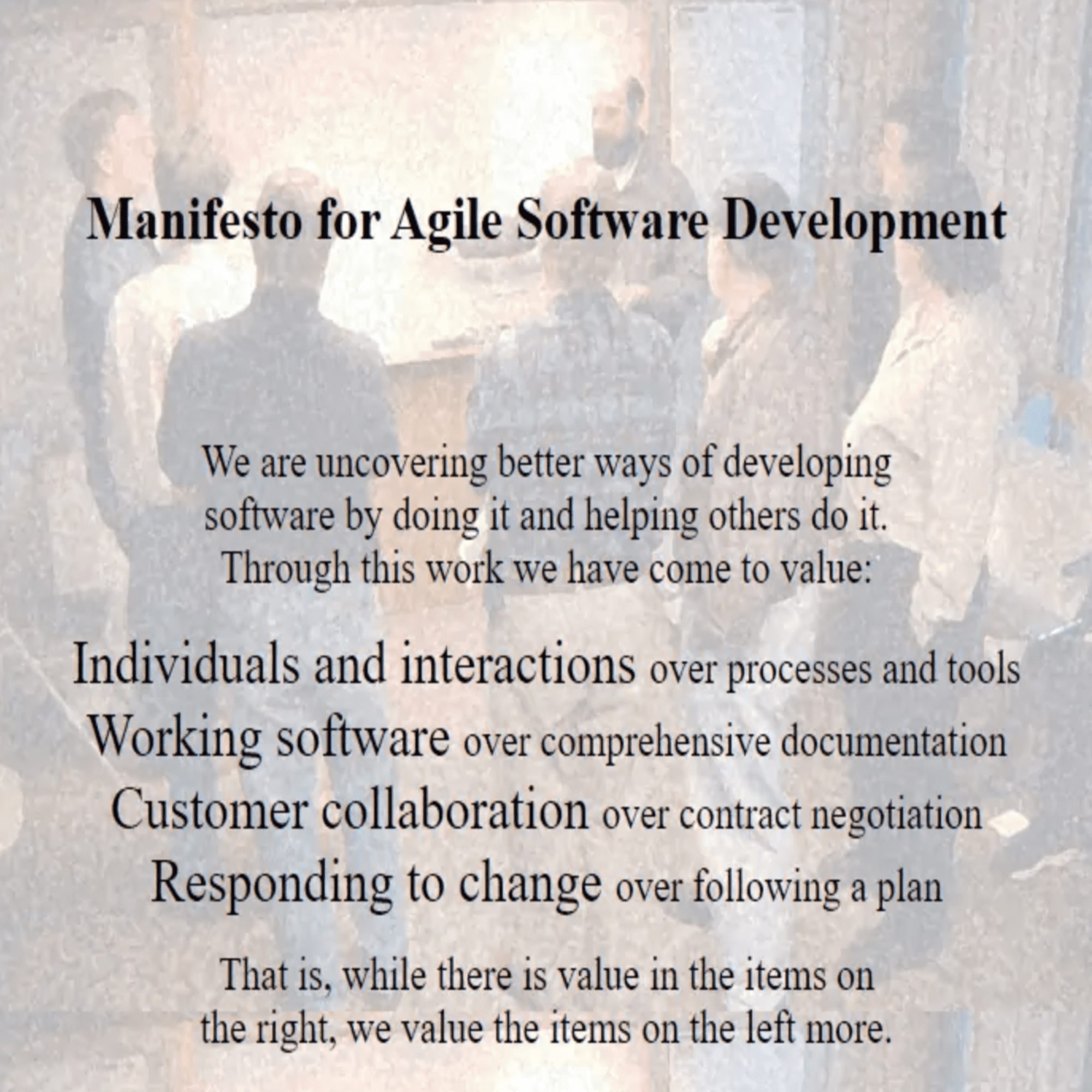
Agile Change Management vs. Waterfall Change Method
The waterfall change method, otherwise known as traditional project management, is just that – a waterfall that cascades from one plateau to another in one inflexible unchanging system.
The waterfall model includes:
- The plan
- Controlled by the manager in a drip-down hierarchy of control
- Measured by tools like metrics and indicators.
- Production takes place under inflexible, highly mechanized and standardized facilities.
The customer is presented with the product at the end of the road. If they reject it, you may have to revamp certain items or, worse, start again. Results: Loss of time and money, dissatisfied clients, disgruntled workers, sabotaged reputation, and possible bankruptcy among other issues.
Contrast that to agile, where agile project management is just as nimble, unpredictable, dexterous and fast. Agile management is:
- Adaptive
- Self-managed in that it’s controlled by the team at all levels
- Periodically assessed and reviewed as the team proceeds.
- Evaluated on whether or not it satisfies the end-user.
In contrast to the Waterfall method of adherence to inflexible rules, agile insists that it’s the end user that determines the product’s direction.
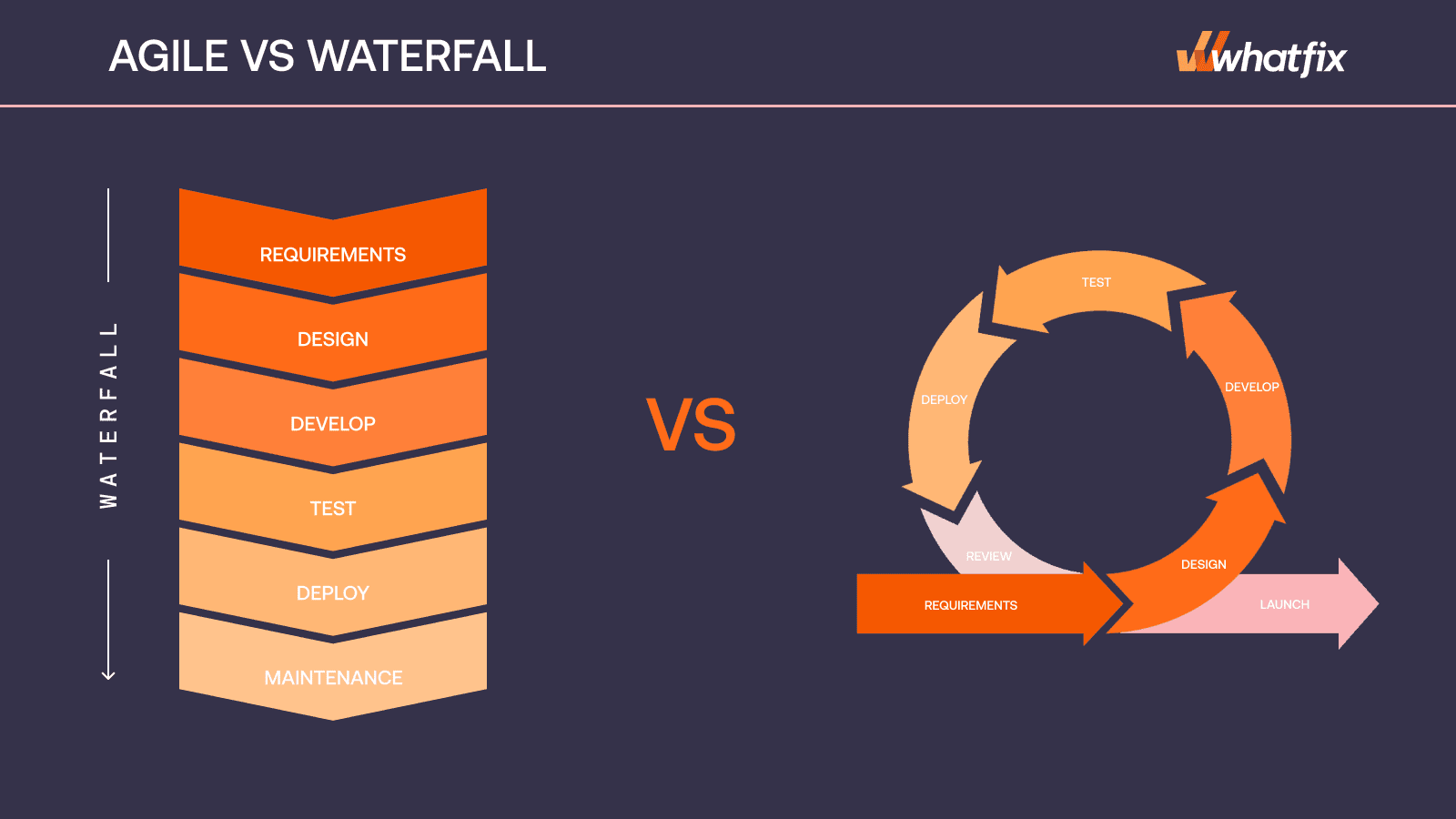
When Should Organizations Take an Agile Approach?
Organizations should take an agile approach when:
- Your team members are disciplined, motivated, and informed in its methodology. Your project, too, has to be sufficiently complex and stakeholders need to consent to its rigors and practices.
- Your clients or end-users agree to collaborate in iterated and extensive Agile standups and discussions.
- Your production or projects can be splintered into time-boxed batches of 2-4 weeks.
- Your projects can be broken into chains of incremental iterative reviews, where each round provides the opportunity for added value.
On the other hand, use a more traditional approach if the reverse situations apply and if customer and marketplace conditions (for example) remain static.
According to a paper published in Research-Technology Management, managers can successfully blend agile with traditional project management by reducing their launch to these three issues: how to integrate agile into its ecosystem, how to prepare for the possible effects that agile may have on their work culture and how to encourage team members and clients to understand and value agile.
Debunking Agile Myths
Many agile myths persist that scare more traditional organizations away from adopting agile techniques. They include the following:
- Agile is a silver bullet. If only that were true! With agile, you can fail just as with any other methodology – only it happens sooner.
- Agile ignores documents and metrics. More correctly, agile practitioners keep documents and metrics at a minimum, only utilizing those that are most relevant and valuable to their products. Agile practitioners also prioritize face-to-face communication to the written word.
- Agile is anti-planning. On the contrary: agile teams plan extensively, producing project releases per quarter, iterations every few weeks and stand-ups (where participants literally participate by standing) each day. The key difference? Agile practitioners mostly use different tools, for example preferring burndowns over Gantt charts.
- Agile is undisciplined. Nothing could be further from the truth. Agile stakeholders have to test, review projects, provide feedback, regularly ship software, and update their plans among other expectations.
- Agile is anti-architectural. That’s because agile disagrees with elaborate software architecture only because it pursues simplicity and the needs of the moment. The methodology recognizes that software (or project needs) change as the future evolves and so businesses need to adjust accordingly.
- Agile doesn’t scale. More correctly, agile doesn’t scale up because it focuses on scaling down. For agile, simplicity and smallness is crucial for project success.
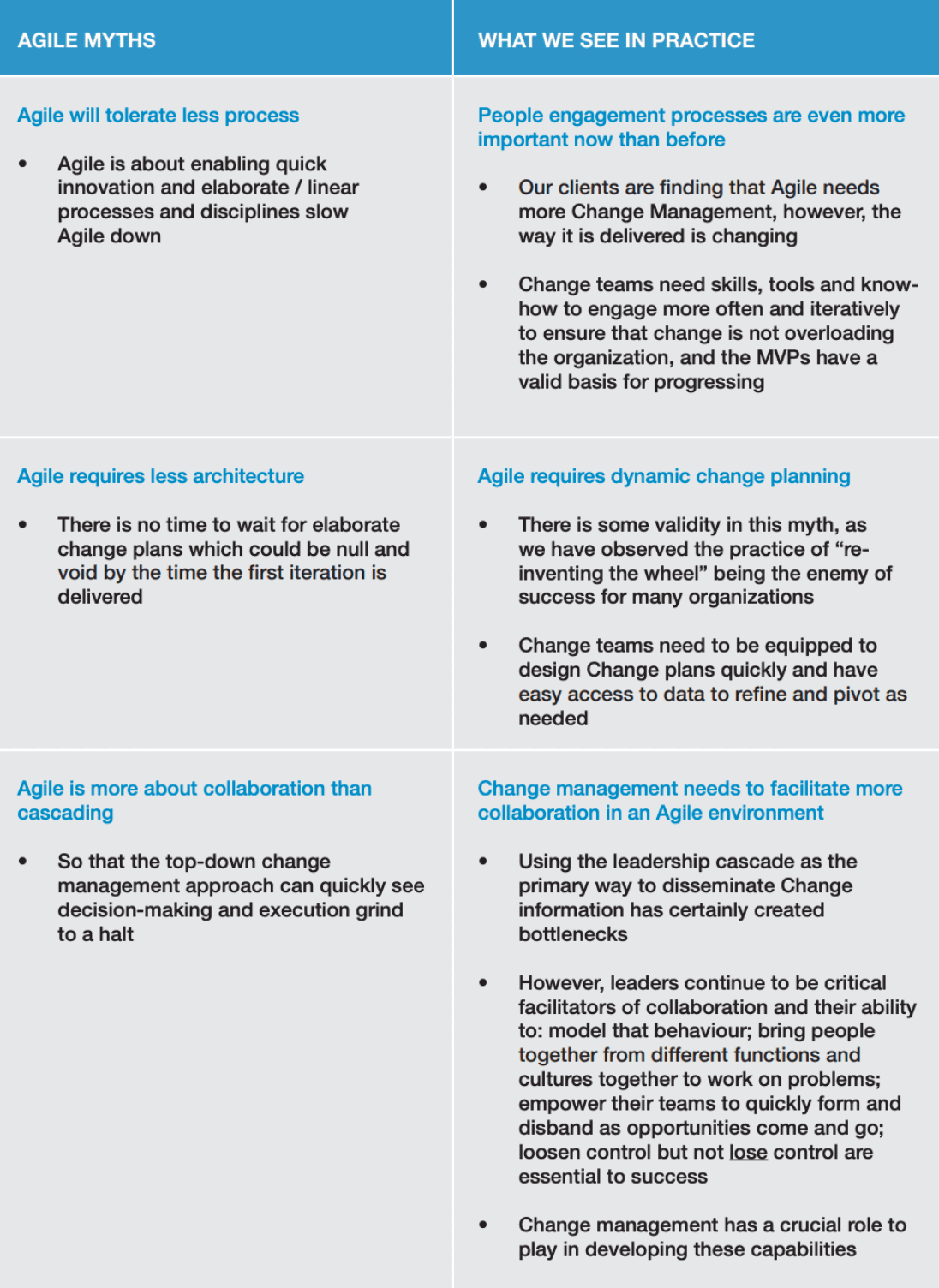

Principles Driving Agile Change Management
The Agile Manifesto included 12 guidelines that form the basis for most business agile methods used today. These 12 agile principles can be applied to change to create an agile approach to change management, which includes:
- Our highest priority is to satisfy the customer through early and continuous delivery of valuable software.
- Welcome changing requirements, even late in development. Agile processes harness change for the customer’s competitive advantage.
- Deliver working software frequently, from a couple of weeks to a couple of months, with a preference to the shorter timescale.
- Business people and developers must work together daily throughout the project.
- Build projects around motivated individuals. Give them the environment and support they need, and trust them to get the job done.
- The most efficient and effective method of conveying information to and within a development team is face-to-face conversation.
- Working software is the primary measure of progress.
- Agile processes promote sustainable development. The sponsors, developers, and users should be able to maintain a constant pace indefinitely.
- Continuous attention to technical excellence and good design enhances agility.
- Simplicity–the art of maximizing the amount of work not done–is essential.
- The best architectures, requirements, and designs emerge from self-organizing teams.
- At regular intervals, the team reflects on how to become more effective, then tunes and adjusts its behavior accordingly.
6 Common Agile Processes
Common agile practices include the following processes:
1. Test Driven Development (TDD)
This is a three-step process where a) you define what would happen if a product fails (b) you draft the simplet code possible to pass that test © you refactor (i.e., test) that code to ensure it meets the requirements for success.
The process is repeated until the team agrees that the product is “Done”.
2. Pair programming
Two programmers work together at one workstation. The “driver” writes code while the partner observes or “navigates”, reviewing each line of code as it’s typed. The partners periodically flip roles.
3. Storyboard
This is a graphic organizer (also called a sprint burndown chart) that provides the team with a high-level overview of their project. Participants see at a glance which tasks have been accomplished and which still need to be completed. These storyboards are often used by Kanban, Scrum or hybrid Agile-Lean approaches.
4. Story card
Story cards are condensed descriptions, posted on storyboards, that describe the product’s typical user, what they want and why. Example:
As a call center operative
I need to know what the new information we need from customers
So that I can change what I say on the phone to customers
5. Definition of Done (DoD)
The entire team has to sign off on finished projects before they proceed to its successor. This is done by the team defining what “done” means (“how do we know it’s ready?”); checking their checklist for Definition of Done items (“have all items been crossed off our list? Is it ready for deployment?”); and checking Done against their organizational values (for example, “the software may be ready, but how about security vulnerabilities?”)
6. Automated testing
Accelerated software production which is the agile way needs accelerated testing. Manual testing is too lengthy and laborious. Developers use tools and frameworks, like Selenium and Cypress, to automate testing and updates of software features, each time code is pushed to the code repository for that particular application.
✓ Thank you, the template will be sent to your email
How Do Agile Teams Prioritize?
There are quite a few ways teams work in an agile environment operation. They include:
1. The MoSCoW analysis
This popular technique prompts developers to ask themselves these questions:
- Must-haves. Are these product needs mandatory or non-negotiable?
- Should-haves. They’re not vital, but do these features or initiatives add value?
- Could-haves. Would these nice-to-have initiatives have some impact if left out?
- Will not have. Maybe these apps or features are unnecessary right now?
MoSCoW focuses on the 80/20 – the most important things your team needs to accomplish change in the shortest given time. Alternately, it also factors in on the most important features your product needs to have to provide value. Its assumption is that the most important things are in the final solution, no matter what.
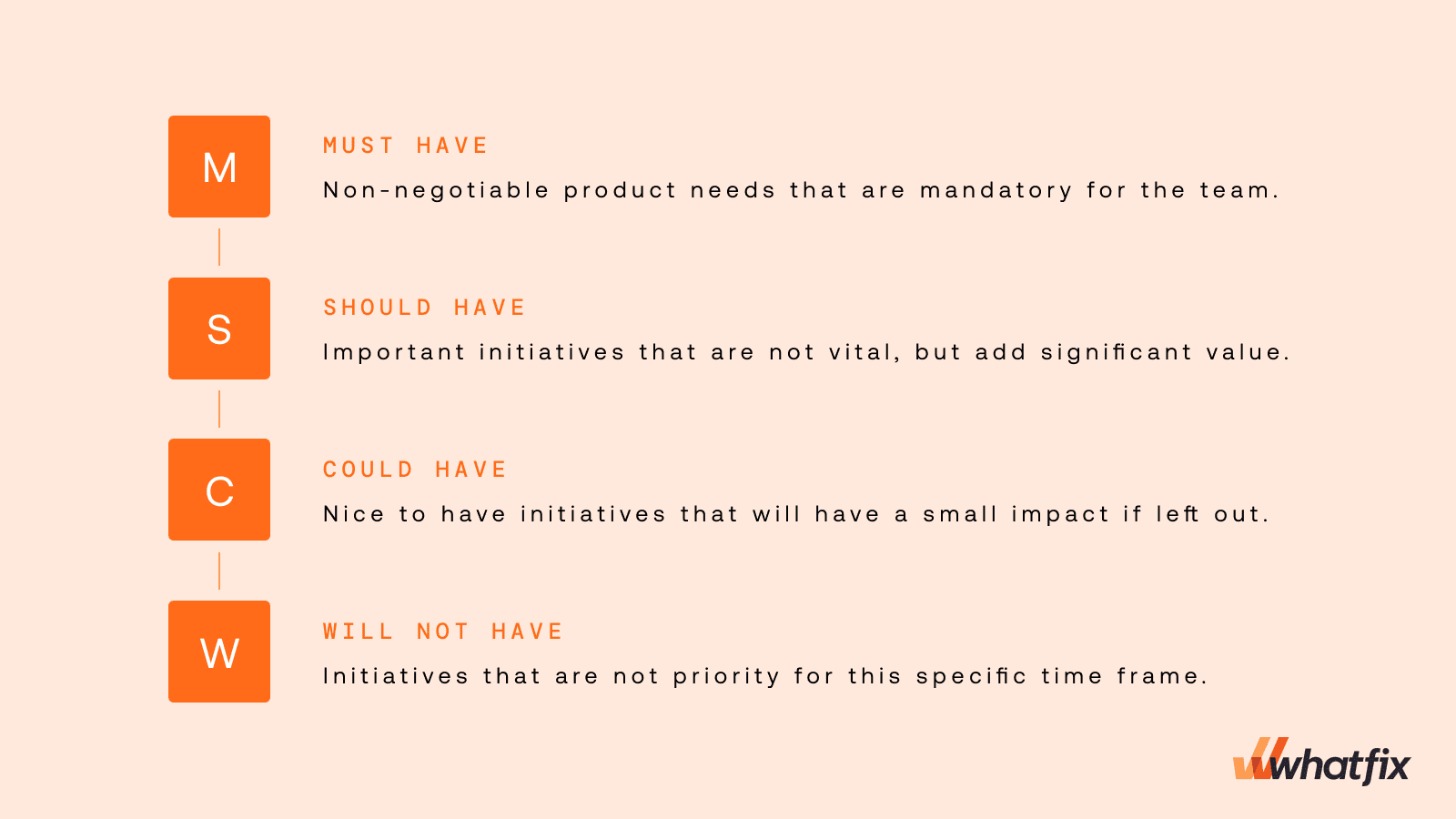
2. Kano analysis
Kano analysis zeros in on the customer. What do we think customers most want from this software release (for example).
These are the categories:
- Delighters/ Exciters: Would customers want something new and exciting, like the NextGen smartphone?
- Satisfiers: Would customers be satisfied just with the essential tools. Say the smartphone has to have a working camera?
- Dissatisfiers: If we insert this fantasy app, will users complain?
- Indifferent: If we include this novelty, will users applaud or just be indifferent?
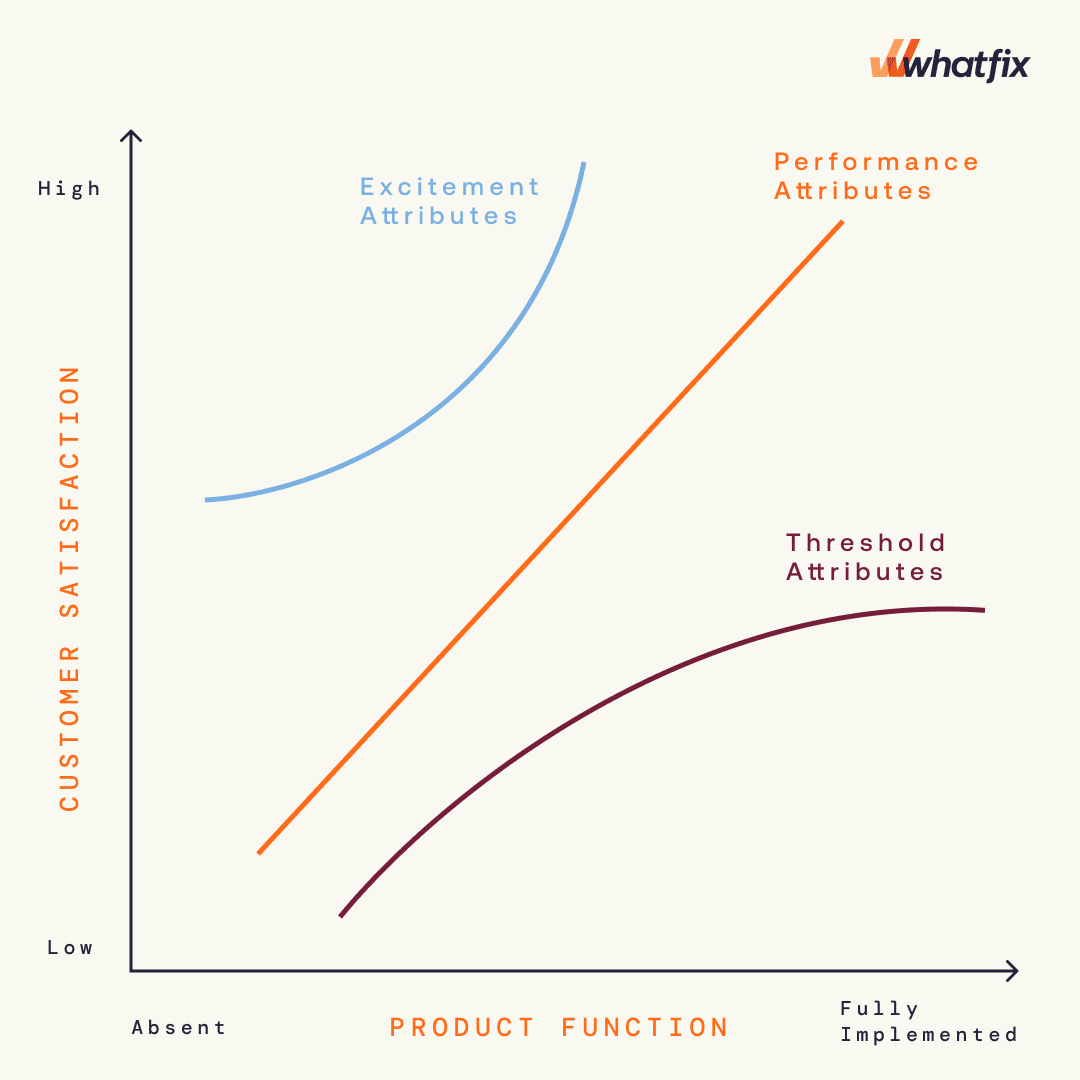
3. Agile Management Process
The Agile methodology iteratively pivots around the following framework:
- Collaboration activities: Activities that encourage regular stakeholder collaboration include daily stand-up meetings; co-locating teams for face-to-face communication; scheduled sessions, such as milestone reviews; backlog refinement sessions; and project update meetings. These collaborative meetings are regularly determined, optimized and spearheaded by the Project Manager.
- Reviews: The development team demonstrates its finished work and answers questions, following which the Product Owner discusses the product backlog or work in process. Potential deadlines for the next segment are discussed. Other considerations include possible changes in issues like timeline, budget, marketplace demands, or potential capabilities and how these impact the product release or subsequent project steps.
- Retrospective: The Team sits for two-to-three hours to discuss the results of the review session and to reflect on what they should (a) stop doing (b) Start doing (c) Keep doing. This information helps the stakeholders plan the next iteration and promotes continuous business process improvement.
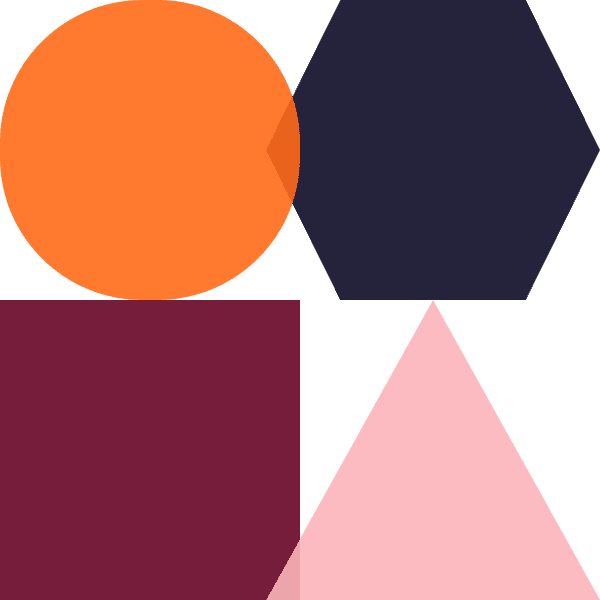
Agile Frameworks
The most common agile frameworks and methodologies are the following:
1. Scrum
Scrum breaks large products and services into batches that can be released by cross-functional teams in 2-4 weeks. Scrum teams review completed batches, minimizing risk and reducing waste.
The entire system is administered by a Product Owner (who prioritizes the Product Backlog of tasks) and by the Scrum Master (who helps the Developers build the project). Scrum artifacts are Product Backlog (i.e. the tasks), Sprint Backlog (i..e, tasks for that Sprint) and Increments (that segment slice of the project).
Its commitments are: Definition of Done; The Sprint goal and the overall Product goal. Scrum participants use a Sprint burndown chart to chart their process
2. Kanban
Tasks are moved across a scheduling system from Product Backlog to Deploy and Done, with the team seeing the progress of project tasks and knowing what needs to be done. This Kanban “billboard” also serves as an inventory control system to control the team’s logistical chain from a production point of view.
Separate Kanban cards on that graph help the team chart their progress, along with providing tangential information about aspects of that particular work item (such as the person responsible for that project or the task description).
3. Extreme Programming (XP)
Extreme Programming (XP) is a software development methodology buits upon many of the same principles, values and strategies of Agile Methodology. It uses similar feedback loops of release, iteration and acceptance.
Strategies include standup meetings, pair programming and unit tests. Guidelines include collaboration, respect for team members, a focus on simplicity and courage (the courage to start anew). There’s an emphasis on appreciating failure, taking baby steps, favoring quality to speed and employing redundant problems to defeat those issues.
4. Feature-driven development (FDD)
Customer-centric Feature-driven development (FDD) is an iterative and incremental software development process similar to Scrum.
Differences? FDD is feature-driven rather than delivery-focused. While Scrum focuses on user stories (such as how the typical user will likely employ this software), FDD asks how targeted users are likely to employ specific features. FDD also replaces standups with documentation to communicate important information, preferring to meet less frequently and then only for important updates.
Another key difference is that while Scrum sees the Product owner as the end-user, in FDD it’s the client who’s seen as such.
5. Lean
Lean is as customer-centric, iterative, and dynamic as agile. Its main difference is that the Lean approach accomplishes its agility by reducing the work in the process while agile decreases its batch size. Lean also moves beyond agile in its elimination of non-value-added activities by also factoring in material and production (not just work) efficiency. Finally, it is far less regimented than Agile with its standups, quarterly releases, reviews, iterations, and defined roles.
Certain agile practitioners adopt a hybrid agile-lean model, where they blend customized aspects of both processes.
Each of these different agile development practices interprets the 12 principles differently and adopts slightly different software development cycles. For example, a scrum software development cycle will have fixed iterations, whereas these do not exist in a Kanban development process.
Each approach also focuses on different aspects. For example, FDD is feature-driven rather than delivery-focused like scrum. Likewise, Lean accomplishes agility by shortening its work bytes while agile accomplishes agility by reducing its batch size. What all these approaches have in common is that each follows the agile framework of regular delivery of products in short timescales, produced without excessive documentation.
Benefits of an Agile Approach to Change
Agile has been called the silver bullet since practitioners experience benefits that include the following:
- Satisfied therefore repeat clients – since work gets produced faster, better, more efficiently – and customs are involved in and see the results.
- Healthier work environment since there’s team collaboration, prompt feedback and excellent communication.
- Faster time to market and expedited turnaround times – since production is constantly reviewed before release.
- Savings in time and cost – revisions are prevented by iterative surveillance. Mistakes get detected earlier thereby improving process efficiency & saving developers from repeating the process.
- Reduced waste since stakeholders work on essential tasks.
- Fewer security breaches since flaws are caught in time.
- Opportunity to innovate since costs are low.
- More motivated employees and less turnover – driven by trust, encouraged by processes that work, and stimulated by a trust-filled collaborative communicative environment.
Limitations of an Agile Approach to Change
While there are many advantages to approaching change with an agile mindset, there are limitations associated with it as well. They include:
- Work can lapse into chaos since it lacks the centralizing directing force.
- Documentation may get sidetracked, which makes it harder for new members to catch up.
- Indefinite project ends and expectations can lead to Scope creep and experience rot
- Difficulty in measuring projects, since progress happens across several cycles
- Agile demands more time investment from clients who must persistently collaborate with developers to provide feedback.
- Negative feedback from as few as two or three members could lead to endless product cycle loops.
5 Best Practices for Adapting Agile Management to Change
While an agile approach isn’t inherently attached to change projects, taking an agile approach can be extremely beneficial to organizations – especially in quick-moving projects. A few best practices to remember when taking an agile approach to change management include:
- Realize that change can be painful and help team members adjust.
- Understand that change can be broken into tangible and intangible elements. Tangible elements include disturbance in the employee’s routine, while intangible elements implicate emotions.
- Encourage team members to share with you their frustrations and to persist through the change.
- Help stakeholders understand that it’s only through the feedback of these sprints that they can successfully navigate their complex and uncertain world.
- Consider integrating agile change management with the Prosci ADKAR Model – a change management tool that helps employees recognize, appreciate and work through the turbulence engendered by change.
Whatfix helps you drive enterprise-wide changes, improve user engagement, and drive user adoption by offering intuitive features like contextual in-app guidance, task lists, and self-help. It provides a personalized onboarding & training experience with customized pop-ups, smart tips, and interactive walkthroughs, ensuring faster learning and reduced support tickets.
Schedule a personalized demo with our experts to make Whatfix your partner in change.
Request a demo to see how Whatfix empowers organizations to improve end-user adoption and provide on-demand customer support
Thank you for subscribing!
Thank you for subscribing!


